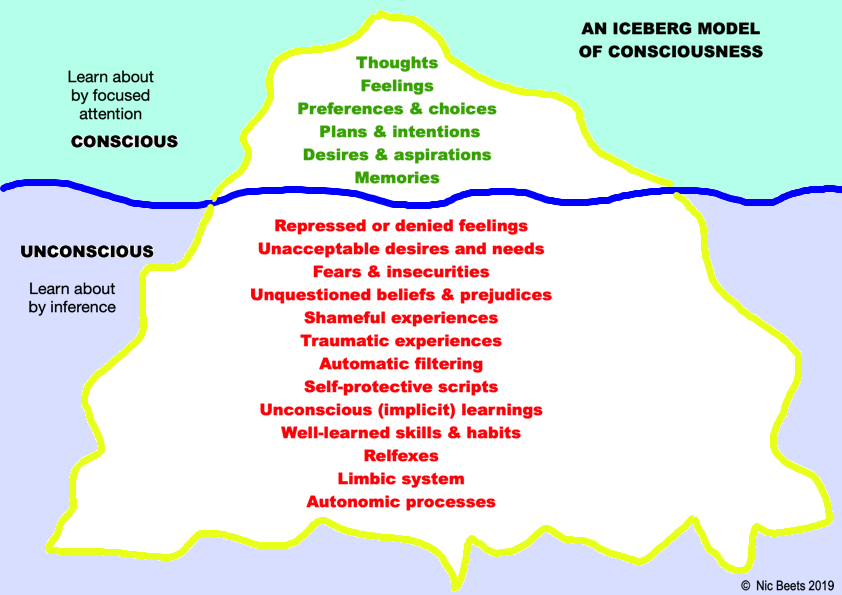
Some people are really practiced at noticing what’s going on inside themselves, how they really feel, what they really want, owning how they behave and being able to explain why. For the rest of us, there’s therapy.
Whether it’s couples or individual therapy a big part of the process is recognising and accepting that quite a lot of what we do is outside our conscious awareness. Our mind is like an iceberg where the bit that we can see above the water (the bit we are conscious of) is only a fraction of all that is going on for us. Conscious thought consists of anything we can notice if we direct our attention towards it. We may not be aware of, say, a memory or a feeling until we focus on it, but when we do we can see it reasonably clearly.
If we can’t access it by focusing our attention, then it’s unconscious. The point of the iceberg metaphor is that there is MUCH more hidden than what is above the surface. For example, many of us have feelings or desires that we learned when we were young were not acceptable (for example through parental disapproval or teasing by our peers). So we trained ourselves to ignore, to suppress, to not even notice those feelings or wants. They went underground, into the bottom of our iceberg. But they didn’t go away and continue to influence our behaviour, our feelings and our expectations. So if we want to have some sense of control over our lives we need to learn about what is below the surface.
So how are we supposed to do that if it’s UNCONSCIOUS?? Well, we can learn a lot about the unconscious by reflecting on what we did and looking for discrepancies, for differences, between what we intended consciously to do and how we actually behaved. So we learn about the unconscious by inference, by “filling in the gaps” between what we did and what we thought we were doing.
In my experience we often know, have a gut feeling or “felt sense” when the inference we are drawing is accurate. It is by this means that we start to move things from the unconscious to the conscious, from the unknown to the known. If we then hold on to that insight and notice if it plays out consistently we complete the shift and what was hidden to us becomes part of our understanding of ourselves and how we operate. We then have the option of choice about whether we want to continue to operate this way or learn a different way to deal with things.
